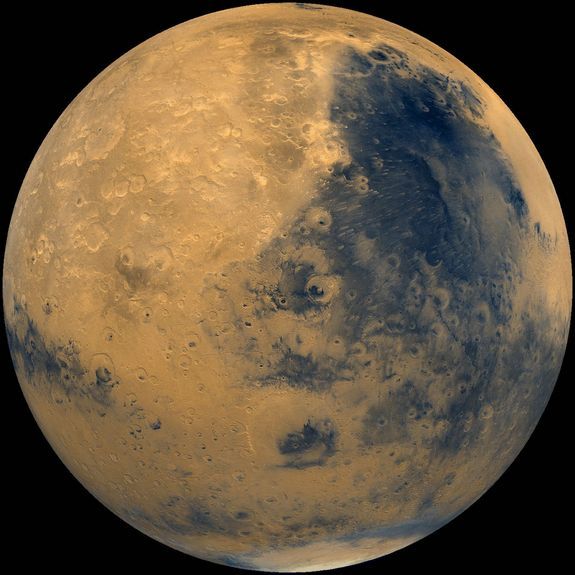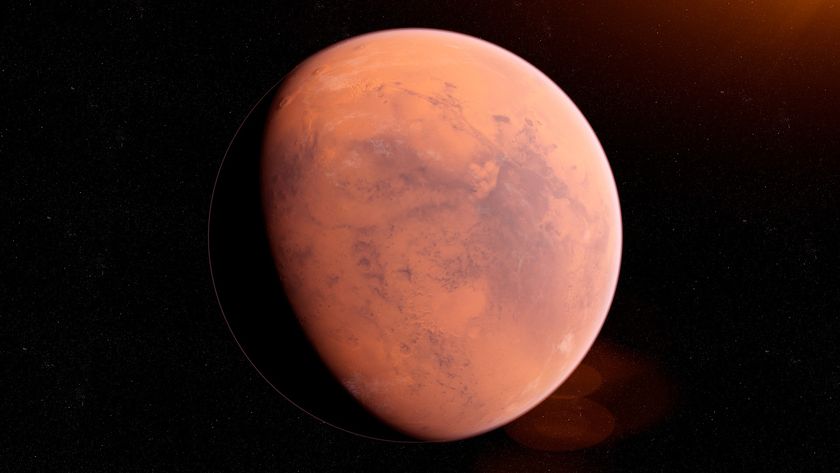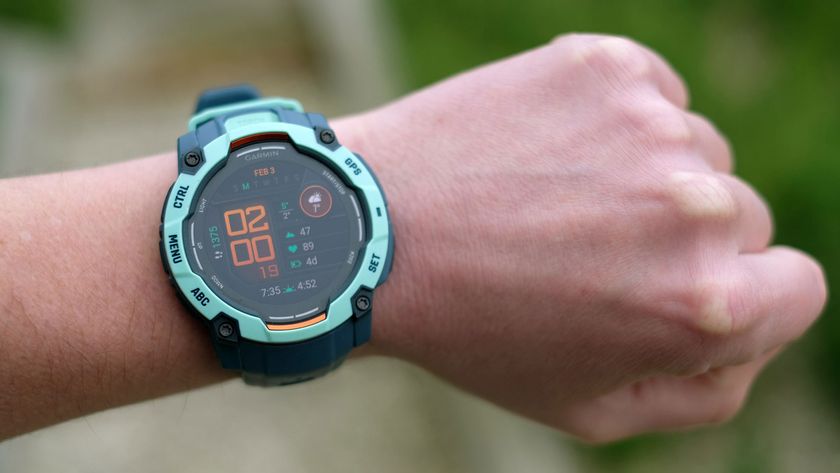
SAN FRANCISCO — Synthetic organisms engineered to use carbon dioxide as a raw material could help humans settle Mars one day, a prominent biologist says.
Man-made, CO2-munching lifeforms are already in the works, geneticist Craig Venter told a crowd here during an event called TEDxNASA@SiliconValley Wednesday night (Aug. 17). Venter and his team, who made headlines last year by creating the world's first synthetic organism, are trying to design cells that can use atmospheric carbon dioxide to make food, fuel, plastics and other products.
This ability would obviously have huge implications here on Earth, but it could also help make Mars — whose thin atmosphere is mostly carbon dioxide — a more livable place, Venter said.
"These kinds of processes will allow us to make almost anything needed there from that CO2 environment," Venter said in a video presentation.
Synthetic life
Venter and his team announced in May 2010 that they had created the first living organism with a synthetic genome.
The biologists constructed the genome of the bacterium Mycoplasma mycoides from many preassembled units of DNA. Then they transplanted the genome into the cell of a closely related species that had been emptied of its own genome. The "host" bacterium soon began to function and reproduce just as a naturally occurring M. mycoides would. [Extreme Life On Earth: 8 Bizarre Creatures]
Sign up for the Live Science daily newsletter now
Get the world’s most fascinating discoveries delivered straight to your inbox.
The feat was more than just a neat trick. It showed that custom-designing organisms to do all sorts of helpful tasks is eminently possible — and may not be that far off.
Creating new lifeforms could help "solve some of the fundamental problems of providing sufficient energy, food, clean water and medicines," Venter said.
Helping out on Earth, and beyond
Venter, who also led a team that decoded the human genome a decade ago. said his top priority is using synthetic life to help solve these big problems on Earth. Our planet, after all, is set to add its 7 billionth person in just a few months, and population growth will not stop there.
"Obviously, food and fuel production are at the top of our list and society's list," Venter said.
To that end, Venter's company, Synthetic Genomics, is trying to develop synthetic algae that produce biofuels cheaply and efficiently. Synthetic Genomics signed a $600 million deal with ExxonMobil in 2009 to help make this happen.
But the benefits of synthetic life don't have to be restricted to our home planet, Venter said. While artifically made CO2-munching organisms could help stem the tide of climate change here on Earth, on Mars they could provide the building blocks of a settlement, using raw materials pulled right out of the Red Planet's air.
"Use your imaginations to think of all the things, if you could design a cell, that we could make to change the future as we write this new software of life to create new sources of almost everything we need going forward," Venter said.
TEDxNASA@SiliconValley was affiliated with the nonprofit organization TED (Technology, Entertainment, Design), which aims to spur innovation. NASA put on the one-evening event.
This story was provided by SPACE.com, sister site to LiveScience. You can follow SPACE.com senior writer Mike Wall on Twitter: @michaeldwall. Follow SPACE.com for the latest in space science and exploration news on Twitter @Spacedotcom and on Facebook.














